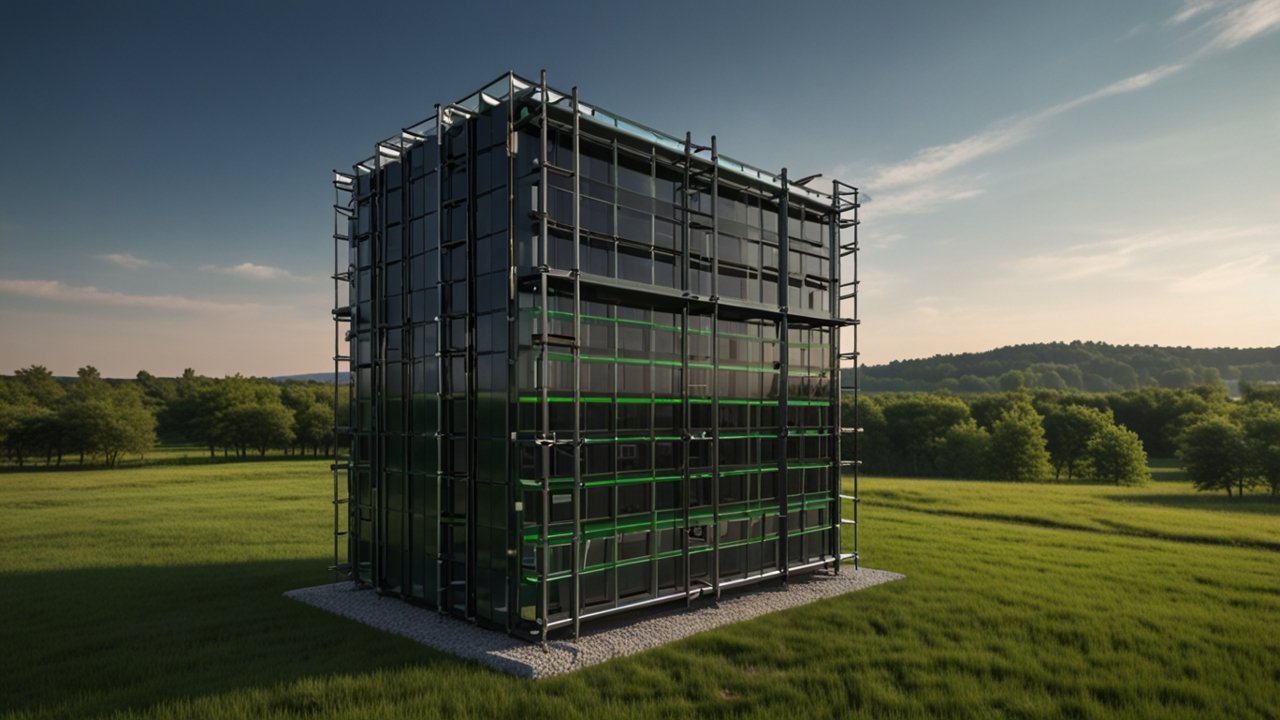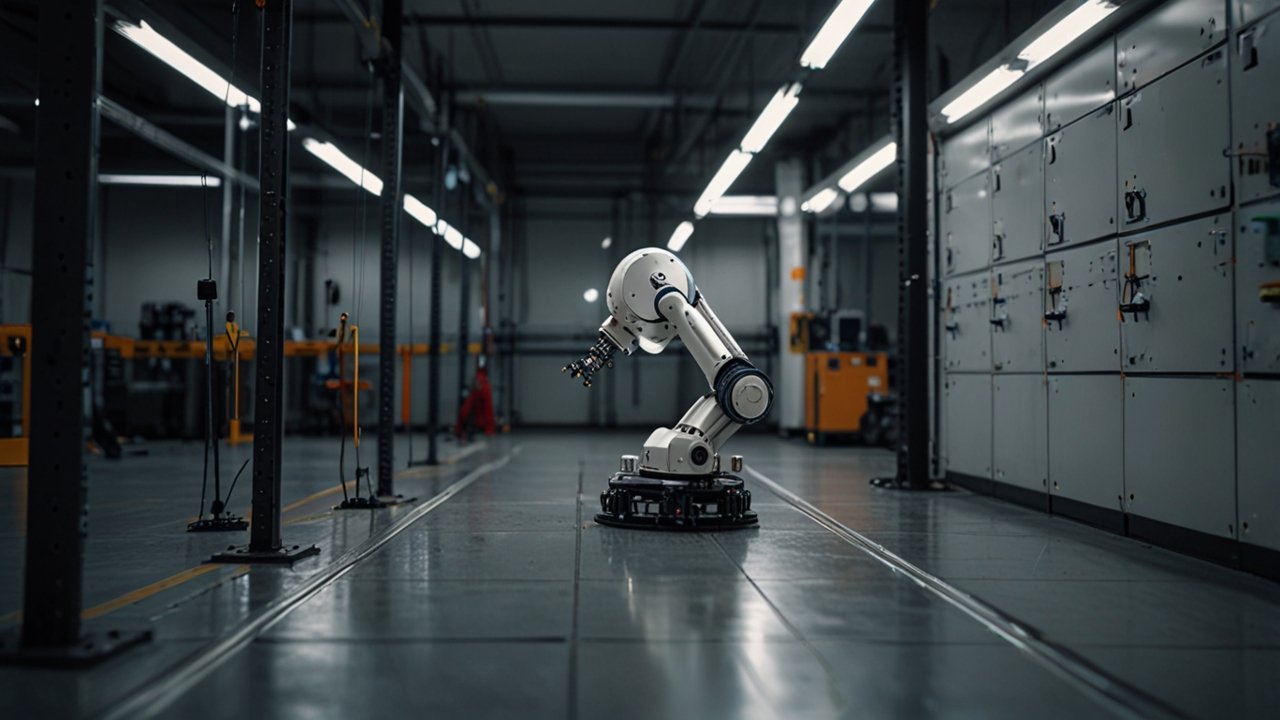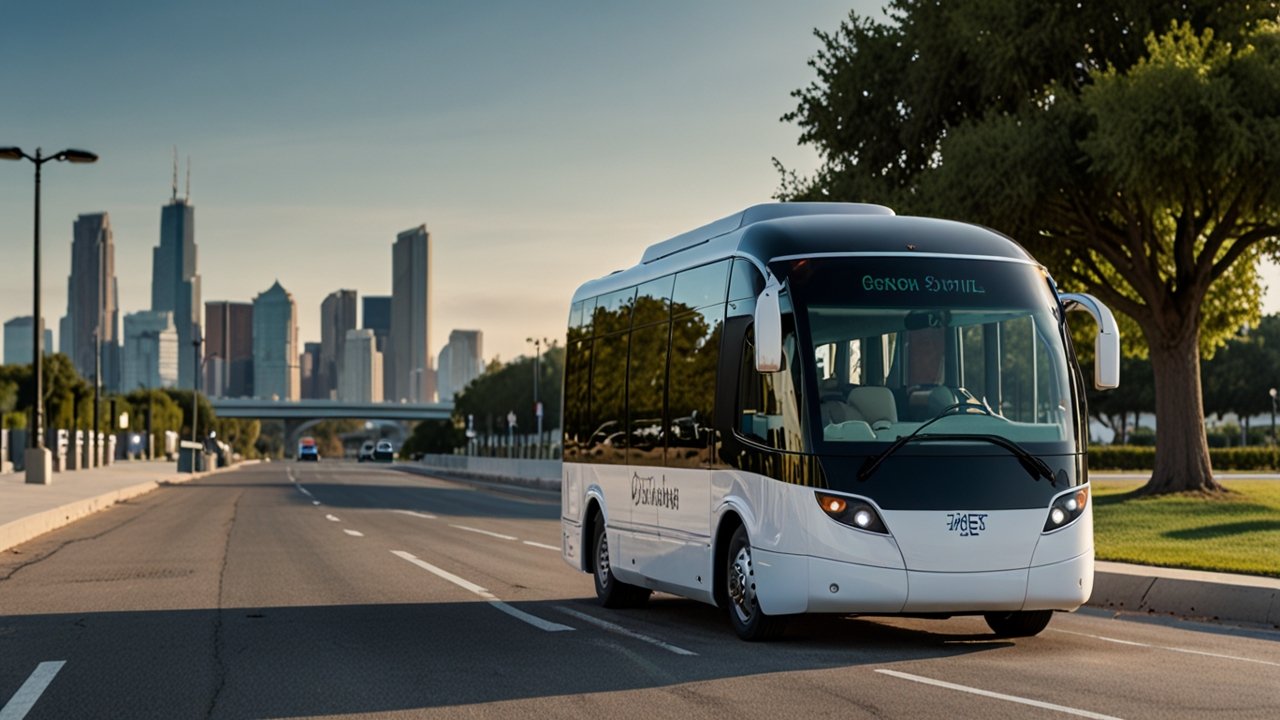Haptic Glove Innovation 2025
The future of virtual experiences is here, and it comes in the form of advanced wearable technology. In today’s rapidly evolving digital landscape, innovative devices are transforming the way we interact with our surroundings. This article dives deep into the evolution, current state, and promising future of advanced haptic technology.
Wearable devices have become an integral part of our lives, merging physical sensations with digital interactions. By exploring breakthrough methods in tactile stimulation, we reveal how modern technology can make virtual experiences more real than ever. For more information on futuristic devices, visit Mobile & Gadgets.
In this blog post, we examine the journey and development of these devices, drawing on historical research and innovative case studies. Get ready to engage with a compelling narrative that not only informs but also invites you to reflect on your own experiences with emerging technology.
📑 Table of Contents
- Introduction to Haptic Glove
- Evolution and History of Haptic Glove
- How Tactile Feedback Enhances Haptic Glove
- Virtual Sensation Systems and Their Applications
- Real-World Case Studies of Haptic Glove
- Force Simulation in Modern Haptic Glove Solutions
- Future Trends: Immersive Interface and Beyond
- FAQ
- Conclusion
Introduction to Haptic Glove
Fundamental Concepts and Innovations
In today’s digital era, the integration of physical sensation into virtual experiences is transforming how we explore digital environments. One of the most exciting breakthroughs is found in the development of the advanced haptic glove. Originally engineered to simulate touch, this device merges innovative sensor and actuator technologies to offer users a taste of real physical interaction. Researchers have designed early prototypes using fiber optic tracking and mechanical feedback to recreate sensations that will someday become a staple in daily consumer technology.
Early models, introduced in the 1980s, laid the groundwork by tracking finger flexion and providing basic tactile responses. Over time, these prototypes have evolved significantly. Modern iterations now incorporate a complex network of sensors to capture hand movements with greater precision. If you are curious about the latest updates in cutting-edge technology, check out Cutting-Edge Technologies.
An innovative combination of lightweight materials and responsive actuators makes current devices comfortable and highly functional. For example, these gloves include sensors that detect even subtle finger motions and provide near-instantaneous feedback via small yet powerful motors. This integration showcases the blend of traditional engineering with modern digital techniques, and sets the stage for further improvements in realism and interactivity. Have you ever experienced a device that changed the way you interact with digital content?
Core Components and Early Examples
At its core, the advanced haptic glove features three critical components: sensors, actuators, and control systems. Sensors capture every minute hand movement, while actuators generate precise mechanical responses. The control systems then translate these inputs to provide immediate haptic sensations. Early examples from the 1980s, such as the pioneering Sayre gloves, recorded initial hand gestures using basic electrical resistive sensors. These early attempts marked the beginning of a technological journey that has evolved into a sophisticated simulation of touch.
Subsequent developments, such as the NASA VIEW system and the DataGlove, set new standards for feedback quality and interaction realism. Fiber optic cables and piezoresistive sensors, once considered experimental, have become fundamental in today’s designs. Each breakthrough is grounded in the idea of producing real-time kinesthetic responses, ensuring that what you feel is closely aligned with visual and auditory cues. Can you imagine a world where every digital touch feels utterly lifelike?
This foundational work paved the way for the intricate systems we use now, where dynamic feedback can deliver up to 7N of precise force simulation at a frequency of 2Hz. These innovations have not only influenced entertainment but have started to reshape training, health, and industrial applications. The evolution of these devices demonstrates a relentless pursuit of merging virtual sensations with physical realities.
Evolution and History of Haptic Glove
Milestones in Development and Technological Shifts
The evolution of the advanced haptic glove is a captivating chronicle of continuous innovation. Beginning with the revolutionary wired gloves of the early 1980s, pioneers like Daniel Sandin and Thomas DeFanti introduced gesture recognition by measuring finger flexion. Their revolutionary Sayre gloves laid the foundation for future development by offering the first taste of virtual interaction.
In 1989, NASA leveraged these early developments by integrating haptic systems into the VIEW project, marking a key milestone in the history of virtual reality. The DataGlove, combined with fiber optic tracking, set a precedent for how human-computer interfaces would evolve. For those interested in the early technology breakthroughs, resources such as historical research on VR offer detailed insights.
This historical progression continued into the 1990s and early 2000s, when a lull in mainstream interest shifted the focus towards refining these technologies. The renaissance of virtual reality in 2012, spearheaded by Palmer Luckey’s Kickstarter campaign for the Oculus Rift, reinvigorated investments in haptic innovations. Can you recall how a surge in crowdfunding transformed technology markets in recent years?
Transformative Partnerships and Commercial Breakthroughs
Throughout its evolution, the advanced haptic glove has benefited immensely from strategic partnerships and industry collaborations. Notably, SenseGlove’s partnership with automotive giants like Volkswagen exemplifies how commercial interests have pushed the boundaries of wearable tech. This collaboration led to the development of prototypes that catered to specialized applications, such as realistic tactile simulation in a virtual environment.
Additionally, the acquisition of Oculus VR by Facebook in 2014 for a whopping $2 billion injected significant capital and technical expertise into virtual reality research worldwide. The collaboration between various tech giants—including HTC, Google, and Microsoft—accelerated the pace of innovation, leading to more refined and practical designs. For more on these collaborations, visit VR history on SenseGlove.
These partnerships have enabled researchers to explore advanced haptic feedback methods such as microfluidic processors, soft robotics, and highly accurate hand-tracking. The journey from rudimentary designs to sophisticated systems underscores a relentless drive for perfection in simulating real-world interactions. Have you ever wondered how big corporations influence technological revolutions?
As each improvement built on the last, the evolution of this wearable tech eventually began addressing nuances such as ergonomics and safety. With advancements in sensor accuracy and actuator responsiveness, today’s devices not only simulate touch but also protect the user from excessive force, ensuring a comfortable and safe virtual experience.
For an in-depth look at these technologies, insights from sources like informative video content can be very illuminating.
This rich history underlines that the journey of the advanced haptic glove is as much about overcoming technical challenges as it is about redefining human-computer interaction. In your opinion, what has been the single most transformative moment in this evolution?
Remember also that as innovations continue, the legacy of early experiments fuels ongoing improvements that promise to make our digital interactions more immersive and enriching.
In this ongoing saga, each stepping stone has paved the way for future breakthroughs, demonstrating that perseverance and visionary thinking hold the key to technological advancement.
Tagging industry experts, Smart Devices continues to capture the imagination of researchers and developers alike.
How Tactile Feedback Enhances Haptic Glove
Mechanisms of Advanced Tactile Feedback
The integration of tactile feedback into advanced wearable devices has revolutionized our digital experiences. This is evident in how minuscule changes in pressure and temperature are simulated to recreate the sensation of touch. High-fidelity sensors, such as piezoresistive and capacitive types, detect subtle movements and interactions that are then interpreted by finely tuned control systems. As a result, the advanced haptic glove creates an experience where users feel like they are physically touching virtual objects.
For instance, actuators within the glove respond almost instantaneously to hand motions, recreating textures and shapes by providing realistic sensory outputs. Electrical stimulation and thermoelectric methods are sometimes combined to enhance these sensations, ensuring that every gesture is met with a corresponding and accurate physical response. This careful orchestration of sensory technology elevates the experience, bridging the gap between virtual and real environments.
If you want to stay updated on breakthroughs in wearable technologies, explore Wearable Tech.
The innovation extends further with the use of solenoid motors and retractable ID holders that create consistent resistance when gripping virtual objects. These devices ensure that the feedback produced is both nuanced and reliable. Academic research from institutions like Cornell underscores the significance of such advancements, as detailed in published studies available on sources like academic research on haptic gloves.
The method of combining mechanical and electrical feedback not only results in a responsive system but also forms the basis for the next level of digital interaction. With improved sensitivity, the advanced haptic glove can simulate forces in a highly controlled manner, ensuring that what you touch in virtual environments mimics the real world. Have you experienced a moment where a digital interaction felt remarkably lifelike?
Furthermore, improved sensor designs help mitigate common challenges such as user fatigue and inaccurate feedback, paving the way for longer, more engaging sessions. It is fascinating to observe how every technological tweak enhances the overall user experience. This intricate balancing act of sensitivity and robustness is at the heart of how tactile feedback elevates technology, leaving us to wonder about the limitless possibilities ahead.
Benefits and Practical Applications in Daily Life
The incorporation of realistic tactile feedback in advanced wearable devices offers numerous benefits across various industries. In entertainment, this technology allows gamers to immerse themselves in virtual worlds with unprecedented realism. For example, when a user interacts with objects in a digital arena, the glove enables a sense of touch that translates virtual textures and resistances into a tangible experience.
Beyond gaming, the impact extends to fields such as medical training and remote operations. Surgeons can now practise complex procedures using simulation tools that provide lifelike tactile feedback, thereby reducing the risk of errors during real operations. According to recent studies, these advancements have reduced training times and improved the precision of simulated procedures—a crucial factor in enhancing overall safety and efficiency.
For additional insights into practical applications, you can learn more at three research examples on VR haptic gloves.
In industrial settings, tactile feedback enables operators to control robotic arms remotely. The ability to feel the weight or pressure of objects guarantees improved decision-making during complex operations. This real-time, precision control is critical in high-risk environments, where every bit of sensory input counts in ensuring both accuracy and safety.
In daily life, the integration of such technology paves the way for more intuitive and seamless interactions with digital tools—blending virtual elements into our real-world tasks. Imagine a scenario where your digital assistant not only responds visually but also provides a corresponding physical sensation to alert you of critical updates. How might this change your approach to managing daily responsibilities?
Moreover, enhanced tactile systems generate a realistic environment in virtual learning modules and remote rehabilitation setups. The tangible feedback provided allows users to engage with digital simulations in ways that were once only possible in the real world. This profound impact on user comfort and efficiency demonstrates the potential for widespread adoption, prompting one to ask: what everyday application would benefit most from such innovative tactile systems?
These benefits, drawn from continuous research and innovation, reassure us that as technology evolves, our interactions will only become more natural and engaging.
Utilizing the expertise of Wearable Tech specialists, it is clear that tactile integration is not a mere luxury, but a core component in reshaping digital experiences.
Virtual Sensation Systems and Their Applications
Integration in Diverse Industries
Virtual sensation systems have dramatically altered the landscape of multiple industries by creating environments where digital and physical experiences merge seamlessly. In the realm of entertainment, these systems empower users to embrace immersive gaming worlds where every interaction is enhanced with precise haptic cues. By using advanced sensors and actuators, developers create simulations that respond instantly to your motions, building a bridge between the virtual and the actual.
This technology also plays a pivotal role in training professionals in high-stakes fields such as medicine and aerospace. For example, surgeons practise intricate procedures using simulators that deploy lifelike tactile feedback. These simulations are grounded in rigorous testing and data analytics, ensuring that every digital sensation is as authentic as possible. Have you ever felt that a simulated experience was nearly indistinguishable from reality?
In addition, the clear benefits of integrating virtual sensation systems extend to remote industrial applications. Operators managing robotic arms in hazardous environments rely on these devices to provide precise feedback during teleoperations. For more on the transformative power of these systems, check out Future Devices.
The ability to combine visual cues with subtle physical sensations not only improves efficiency but also significantly reduces the risk of operational errors. Detailed studies published on platforms like technical research publications strongly support these observed improvements in operational safety and productivity. This sophisticated interplay of sensors, control algorithms, and actuator responses creates an engaging virtual world that appeals to both professionals and consumers.
This comprehensive application of virtual sensation systems encourages a rethinking of traditional training methods while also enhancing everyday digital interactions. It invites us to reflect on how our engagement with technology might evolve in the coming years. What new industries could emerge as a result of these innovative applications?
Emerging Trends and Future Possibilities
Advances in virtual sensation systems are paving the way for groundbreaking applications that extend far beyond traditional use cases. Emerging trends indicate a growing emphasis on creating multi-sensory experiences that incorporate visual, auditory, and tactile elements in perfect unison. As research continues, the systems are evolving to offer not only the feel of textures but also to simulate temperature changes and dynamic pressure variations.
In education, for instance, interactive simulations are being developed that enable students to engage with scientific and historical content in unprecedented ways. Virtual laboratories allow learners to conduct experiments with a realistic sense of touch, enhancing their understanding of abstract theories through direct sensory engagement. How would you feel if your digital textbooks could provide real-time physical feedback during experiments?
Moreover, industries like retail and e-commerce are beginning to explore these systems to create immersive shopping experiences. Virtual showrooms allow consumers to “feel” the quality of the products they are considering, revolutionizing online purchasing processes. These trends illustrate the potential for an expansive range of applications that were once considered far-fetched. For further detailed discussions on technological trends, refer to insightful articles available through industry news on Reality Labs.
As these applications proliferate, the boundary between digital and physical experiences continues to blur, leading to a future where virtual sensation systems may become as integral to our daily routines as smartphones and wearables. What transformative possibilities do you foresee emerging from this rapidly advancing technology?
With continued research and development, novel use cases abound that promise to revolutionize traditional methods of training, entertainment, and interaction. The relentless pursuit of authenticity in digital experiences is altering how we perceive and interact with virtual environments—a prospect that inspires excitement and curiosity about the future of human-technology interplay.
Real-World Case Studies of Haptic Glove
Medical and Rehabilitation Innovations
Across the medical field, real-world applications of advanced wearables have proven transformative. In hospitals and training centers, immersive simulations that incorporate realistic tactile responses are being used to train new surgeons in delicate procedures. One notable example is the collaborative project between neurosurgeons at the University of Western Ontario and Veyond Metaverse, which employed state-of-the-art haptic gloves to simulate External Ventricular Drain (EVD) surgery. This simulation provided students with detailed tactile feedback and dynamic force simulation to mimic the feel of surgical tools—a breakthrough that has shown significant promise in enhancing procedural accuracy.
Such systems incorporate small DC vibration motors and piezoresistive thin-film force sensors, creating an environment where every interaction feels genuine. A study published on PubMed confirms that these interventions improve both skill acquisition and confidence among trainees. Do you think these innovations will redefine the future of medical education and rehabilitation?
Additionally, rehabilitation centers are adopting similar technologies for stroke patients. Virtual reality-based interactive environments complete with engaging tasks such as “gopher hitting” not only help patients regain motor skills but also offer motivational, gamified rehabilitation methods. Such pioneering applications showcase how advanced devices can transform training and recovery processes while maintaining a comfortable and natural user experience. To learn more about these exciting developments, explore Innovative Solutions.
Industrial and Remote Operation Case Studies
In industries where safety is crucial, advanced wearable devices have ushered in a new era of remote operations. Research organizations like TNO have used these gloves to provide remote tactile feedback while handling hazardous materials. Operators, working from safe locations, can now feel the weight, texture, and resistance of objects via robotic arms, ensuring accurate detection and assessment during high-risk operations.
This capability was highlighted in a comprehensive study that documented improvements in remote operation efficiency and safety. Detailed case studies available on industry reports illustrate that the integration of these advanced systems leads to faster decision-making and improved precision in challenging conditions. Could this level of tactile precision change the way emergency services conduct field operations?
Furthermore, advanced simulation systems have also been implemented in training scenarios for high-risk industrial operations. These setups combine visual simulations with advanced tactile outputs, ensuring that every touch and movement translates into vital operational information. The significance of these case studies lies in their demonstration of the fusion of digital interfaces with human ergonomics to create safer, more reliable work environments.
The impact of such real-world case studies extends beyond immediate safety improvements; they signal the potential for broader industrial adoption, resulting in significant shifts in operational methodologies and training protocols. What industry would benefit most from this level of integration, and how might these advances influence future work practices?
Comprehensive Comparison of Case Studies
| Example | Field | Impact | Region |
|---|---|---|---|
| EVD Surgery Simulation | Medical Training | Enhanced skill acquisition | Canada |
| Remote Container Analysis | Industrial Operations | Improved safety in risky tasks | Europe |
| Stroke Rehabilitation | Healthcare | Accelerated motor recovery | USA |
| Robotic Teleoperation | High-Risk Operations | Precision control with tactile feedback | Global |
| VR Educational Modules | Learning Simulations | Interactive multi-sensory learning | Global |
These comprehensive case studies reveal the diverse impacts and benefits that such technological advances can have, urging further exploration of their real-world applications. What other sectors do you think might soon adopt these transformative technologies?
Force Simulation in Modern Haptic Glove Solutions
Technical Advancements and Key Specifications
The modern wearable device employs innovative force simulation techniques to deliver realistic physical sensations. By integrating solenoid motors with retractable mechanisms, the system can generate controlled force outputs—up to 7N at a frequency of 2Hz—ensuring that every grip, pinch, or release is accompanied by accurate resistance. This level of sophistication is rooted in the precise calibration of sensors and actuators that measure and recreate touch.
These technical advancements owe much to cross-disciplinary research incorporating fields such as soft robotics and microfluidics. In advanced systems, microfluidic processors are used to regulate air flow to an array of small actuators, enabling nuanced adjustments in force output. Detailed technical reviews from academic journals confirm these performance specifications as a cornerstone of reliable force simulation.
For further technical details, review findings on PubMed.
The role of force simulation goes far beyond entertainment—it is essential in ensuring user safety and enhancing realistic interaction with digital models. As these systems continue to evolve, improvements in actuator responsiveness and sensor accuracy will contribute to even more lifelike simulations. Have you considered how increased force precision might revolutionize device ergonomics?
This progress not only makes physical interactions more credible, but it also mitigates issues like device fatigue and sensor misinterpretation. The underlying engineering principles continue to push boundaries, promising an era where digital touch is nearly indistinguishable from real-life pressure. This synthesis of mechanical precision and digital control underscores a major step forward in the wearable industry.
Integration Challenges and Overcoming Limitations
While advanced force simulation has opened up new possibilities, it comes with its own set of challenges. One major obstacle is balancing the need for precise feedback with considerations such as weight, energy consumption, and device durability. Engineers must fine-tune each component to maintain user comfort during extended use without sacrificing the realism of generated force. Ideally, minimizing device bulk while amplifying performance is the ultimate goal—one that has driven relentless innovation in design.
Further, power requirements and the associated battery life continue to be a hurdle. Solutions involve optimizing power management through improved control systems and the potential incorporation of energy-efficient components. This is particularly crucial in maintaining consistent performance during long operational periods. In-depth technical analyses published on sources such as video tutorials on haptic systems provide further insights into these challenges.
Despite these difficulties, overcoming integration limitations remains a top priority for researchers. As they refine designs, the focus increasingly shifts to ensuring that enhanced force simulation does not lead to excessive energy drain or compromised safety. Thoughtful engineering and creative problem solving are driving the next generation of wearable technologies. What do you think is the most critical factor when optimizing these systems?
Progress in this area is incremental yet significant, promising future devices that are not only lighter and more reliable but also more seamlessly integrated with digital platforms. The current state of force simulation technology, with fine-tuned control over force output and energy efficiency, is a testament to the collaborative efforts of multidisciplinary teams worldwide.
Future Trends: Immersive Interface and Beyond
Emerging Technologies and Integration with AI
The next evolution of wearable systems points towards an era where artificial intelligence seamlessly integrates with haptic solutions. Future devices are expected to become smarter by using machine learning algorithms to predict user intent and adjust responses in real time. This convergence promises a leap forward into a more immersive interface with the integration of visual, auditory, and precisely calibrated haptic inputs.
Innovations in miniaturization and materials science will further streamline the design, making devices more comfortable and energy-efficient. Ongoing research indicates that improved sensor and actuator technologies will not only enhance responsiveness but also ensure that digital sensations closely mimic real physical interactions. Have you imagined how AI could personalize your digital interactions to perfectly suit your needs?
Looking forward, the next generation of research will likely include interdisciplinary collaborations that bring together experts in robotics, neuroscience, and industrial design. These collaborations aim to refine every aspect of wearable devices and further reduce the disparity between virtual responses and real sensations. In this journey, emerging technologies will be a critical force in overcoming existing limitations and expanding the scope of application. For detailed industry perspectives, visit Reality Labs research.
Ultimately, as AI and sensor technologies continue to improve, we can expect future devices to become more autonomous and context-aware. What innovative applications would you envision if your interactions were completely transformed by intelligent, adaptive systems?
This exciting prospect will likely redefine how we approach everything from professional training to personal entertainment. The merging of algorithm-driven insights with refined haptic feedback is set to establish new performance benchmarks, heralding a future where digital experiences feel utterly natural—almost indistinguishable from real life.
Sustainability and Standardization in Future Designs
As wearable technology continues to progress, sustainability and standardization are emerging as equally important considerations. Future designs must focus on eco-friendly production methods and the use of advanced materials that improve durability and comfort without increasing the device’s weight. The push for standardization in haptic feedback protocols will ensure that devices can communicate seamlessly with multiple platforms, ultimately benefiting consumers worldwide.
Efforts to standardize the technology are complemented by research into sustainable energy sources, reducing overall power consumption. With strict industry standards, the advanced systems will become more reliable and cost-effective over time. Have you considered how standardization might streamline the way digital devices interact across various platforms?
This future-oriented approach is underpinned by continuous technological advancement and cross-industry collaborations. Researchers are striving to establish guidelines similar to those set for visual and audio components, ensuring that tactile feedback systems maintain high fidelity across different applications. Such measures represent a critical step toward achieving universal compatibility and reliability.
Moreover, the integration of renewable energy solutions such as improved battery technologies and low-power processing circuits will contribute to a more sustainable future. These developments will not only make advanced wearable solutions more accessible but also pave the way for significant environmental benefits. What do you think are the long-term advantages of achieving such a balance in technology?
This collaborative push for sustainability and standardization in haptic technology is expected to drive the industry forward, ensuring that future devices are as eco-conscious as they are innovative. In doing so, they will help shape a digital future that is both highly efficient and responsibly designed.
Innovation is not solely about cutting-edge gadgets—it is an art form that transcends traditional limitations. When we think about design beyond boundaries, it is about harnessing creative problem-solving and collaborative thinking to forge new paths in technology. This approach embraces the idea that multidisciplinary cooperation, drawing from fields as diverse as industrial design, neuroscience, and behavioral psychology, can lead to revolutionary insights.
In this realm, creativity takes on a pivotal role. Designers and engineers are not merely tasked with solving specific problems but are challenged to rethink what is possible. They use design thinking methodologies and prototype iterations to refine ideas, constantly testing and learning from each experiment. Every iteration is a step forward, contributing to a more interconnected and thoughtful technological landscape.
This enthusiasm for innovation inspires projects that blend aesthetics with functionality. By focusing on user experience and intuitive interactions, creative teams are able to build systems that feel natural and responsive. Such thinking encourages a culture where experimentation is valued, and every failure is simply a precursor to a breakthrough moment.
Furthermore, these interdisciplinary collaborations allow for the sharing of insights that may lead to unexpected yet valuable innovations. For instance, thinking outside of conventional constraints can lead to systems that not only communicate effectively but also foster a deeper connection between the user and the device. The creative process is an indispensable component of shaping technologies that ultimately enhance our quality of life.
As we look toward a future where innovation is boundless, the ability to integrate design thinking with technological prowess becomes a crucial asset. Let this perspective remind you that every innovation starts with a simple idea—a spark of creativity that can illuminate possibilities beyond our current imagination. Embrace this mindset, and consider that the most profound changes often arise when we dare to think differently.
FAQ
What defines the advanced haptic glove technology?
The advanced wearable device combines high-precision sensors, responsive actuators, and intelligent control systems to simulate physical touch with near-real accuracy. It represents a fusion of traditional mechanical engineering with modern digital innovations to recreate lifelike tactile sensations.
How has tactile feedback improved over the years?
Tactile feedback has evolved from basic pressure and vibration outputs to sophisticated systems that can simulate texture, temperature, and force with high fidelity. This progress is driven by innovations in sensor technology and actuator precision.
What industries benefit most from these innovations?
Industries such as medical training, remote operations, and entertainment have seen significant benefits from these technologies. Realistic simulations not only enhance training but also improve safety in industrial settings.
How does force simulation contribute to device realism?
Force simulation plays a critical role by providing measurable and controlled resistance during interactions. This ensures that digital objects feel as though they have physical mass and texture, greatly enhancing the immersive experience.
What future advancements can we expect?
Future developments are likely to include enhanced integration with AI, sustainability improvements, and greater interoperability through standardization. These advances will further blur the lines between digital and physical interactions.
Innovation is the art of overcoming constraints and reimagining the possible. In a world where creativity fuels advancement, design thinking has emerged as a powerful tool for solving complex problems. This approach brings together diverse perspectives from disciplines such as industrial design, psychology, and engineering. When you step away from conventional methods, you tap into a realm of ideas that challenge the status quo and encourage novel solutions.
The process of creative problem-solving begins by questioning assumptions and re-envisioning everyday objects through a fresh lens. Designers explore how simplicity can merge with functionality, often leading to groundbreaking products that redefine user experience. In interdisciplinary teams, every voice is valued, and even the smallest insight can spark a transformative idea. It is within this collaborative space that breakthrough innovations are born.
The journey of exploration and experimentation nurtures a culture of continuous improvement. Teams begin to see obstacles as opportunities for growth, where failures are simply stepping stones to greater achievements. Embracing this mindset allows for surprises and inventive ideas that push the boundaries of traditional design. This dynamic environment not only results in better products, but also fosters a spirit of adventure and resilience.
As innovative concepts take shape, the convergence of aesthetics and utility becomes apparent. Unbound by strict rules or expectations, the art of creative problem-solving encourages designers to take risks and explore uncharted territories. The excitement of discovering a new perspective drives efforts that eventually lead to products capable of addressing challenges previously thought insurmountable. In reflecting upon these ideas, one realizes that the true magic lies in the courage to reimagine what can be.
The journey beyond conventional limits is a celebration of ingenuity and perseverance. By embracing this approach, we open doors to limitless possibilities that extend far beyond the original vision. Let your curiosity lead you forward, and remember that every great innovation starts with the bold decision to dream differently.
Conclusion
The advanced haptic glove represents a significant leap forward in wearable technology. From its humble beginnings in the 1980s to today’s sophisticated prototypes, every step of this journey has revealed exciting possibilities for transforming our interaction with digital environments. The integration of tactile feedback, force simulation, and emerging AI innovations collectively heralds a future where virtual and physical realities blend seamlessly.
This comprehensive exploration not only highlights the technical feats achieved thus far but also inspires us to ponder the transformative potential of such devices in everyday life. Whether used in medical training, industrial applications, or immersive entertainment experiences, these innovations promise to enrich our digital interactions in unprecedented ways.
Your engagement with this dynamic technology is just beginning, and the evolution is only getting more exciting. Have you experienced these transformative touches yet? For more information and further inquiries, feel free to Contact us. We invite you to share your thoughts or explore additional developments in this rapidly advancing field.




















Leave a Reply